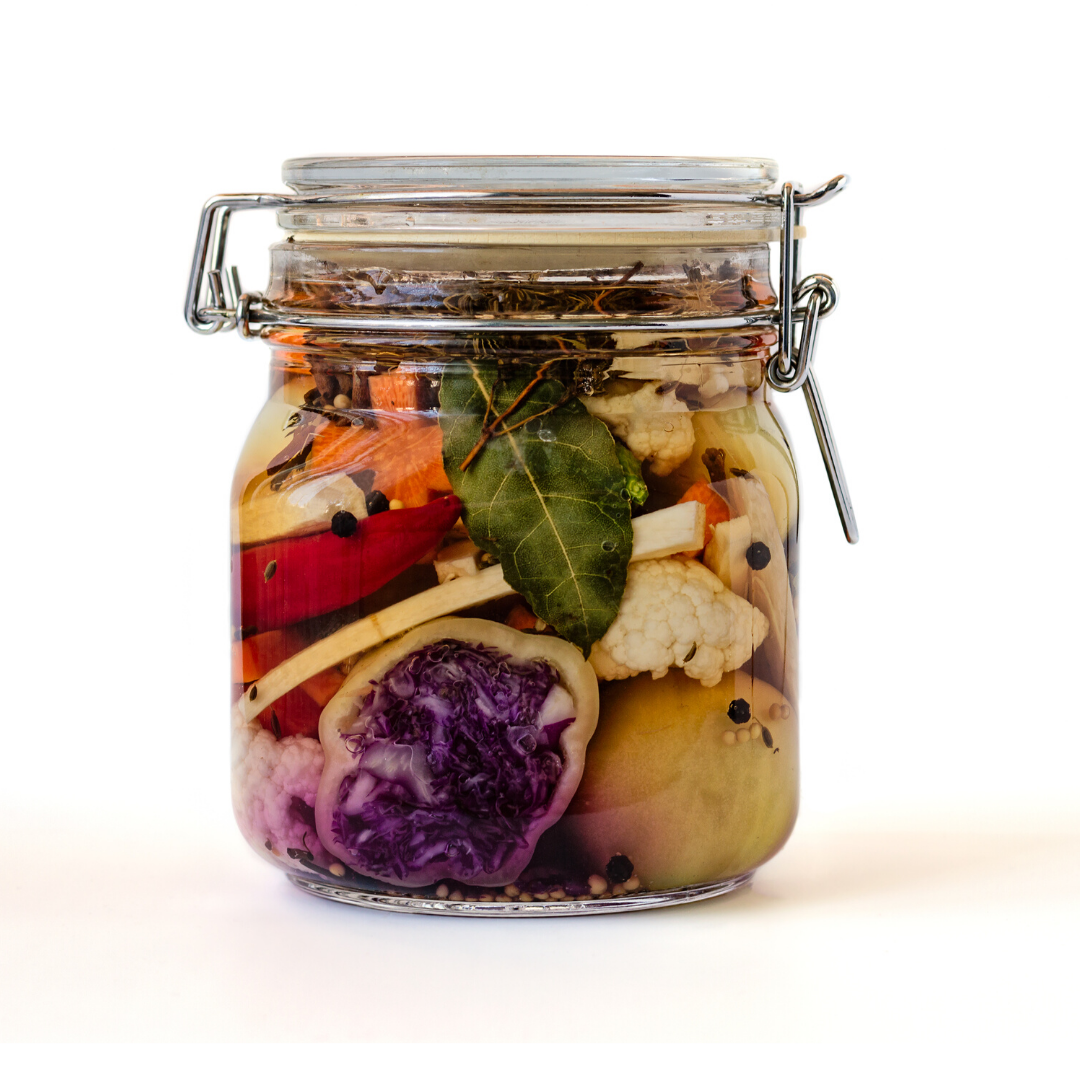Histamine in Foods: How It Could Aggravate Your Allergy Symptoms
By Lyne Desforges, R.H.N.
 Allergy season is here and you are wondering why your symptoms are worse this year? It could have nothing to do with the amount of pollen in the air and a lot more to do with what you are eating. Yes, histamine in food may be adding to your histamine load and your body cannot handle it. You may have become histamine intolerant (8).
Allergy season is here and you are wondering why your symptoms are worse this year? It could have nothing to do with the amount of pollen in the air and a lot more to do with what you are eating. Yes, histamine in food may be adding to your histamine load and your body cannot handle it. You may have become histamine intolerant (8).
What Is Histamine?
Histamine is a brain chemical (or neurotransmitter) that is released in the body, as part of the inflammatory response. (5) When we come in contact with an allergen, histamine is like the first responder of the immune system, working at getting rid of the foreign invader, whether it is a virus, bacteria, or an allergen. (6)
Histamine is also essential for the regulation of stomach acid (12), the permeability of blood vessels, muscle contractions (8), brain function and neuropathic pain relief. (9)
What is Histamine Intolerance?
If there is too much histamine circulating in the body and the body cannot break it down quickly enough, then typical allergy symptoms start to appear: red or itchy eyes, hives, rashes, swelling, low or high blood pressure, heart racing, chest pain, nasal congestion, headaches, fatigue, irritability, digestive issues, nausea, vomiting, dizziness, anxiety. (8)
The role of Diamine Oxydase (DAO)
Diamine oxydase (DAO) is one of the enzymes responsible for the breakdown of histamine in the body. If you have a deficiency in this enzyme, then you can have a buildup of histamine. (8) Certain medications, digestive disorders, and foods may block proper function of DAO as well.
The Histamine Bucket
 To better understand the effect of histamine in food, let’s use Dr. Joneja’s analogy of a bucket of water (2). Let’s compare histamine in our body to water in a bucket.
To better understand the effect of histamine in food, let’s use Dr. Joneja’s analogy of a bucket of water (2). Let’s compare histamine in our body to water in a bucket.
- We start with a little bit of water in the bucket because that’s the essential amount of histamine we need for our body to function properly.
- If you consume foods that are inflammatory for you, then that adds water (or histamine) to your bucket.
- If you have seasonal allergies, environmental allergies, or food intolerances, and you are exposed to the allergen (pollen, dander, plants, food, etc.), then you are producing more histamine and adding more water to that bucket.
- If you have a DAO enzyme deficiency, then your bucket will fill up that much faster because your body is not able to breakdown the excess histamine.
- If you consume a meal made of food that are rich in histamines (i.e. cheese, wine, avocados, strawberries, kimchi, etc.), then you continue to fill your bucket. If your histamine level was already high because of your allergies, then the bucket overflows, and that’s when symptoms appear.
The top of the bucket is a person’s tolerance level. Everyone’s tolerance will be different depending on the factors mentioned above. Please note that histamine levels in your body vary all the time because of what you are exposed to and what you eat. Therefore, during pollen allergy season, you may find yourself reacting to foods (usually high-histamine foods) that you would not normally react too. That’s because your bucket is already too full.
Where does histamine come from?
You either make it (intrinsic) or ingest it (extrinsic). (3)
Intrinsic sources:
1. Our body makes histamine naturally to perform certain essential functions in the body.
2. Intestinal bacteria can make it from undigested protein in the bowels.
Extrinsic sources:
1. Some foods naturally contain high levels of histamine, especially aged or fermented foods.
2. Certain manufactured foods also contain high levels of histamine because of the additives it contains.
3. Certain foods are histamine releasers. They encourage the release of histamine from mast cells in the body.
4. Certain foods block the activity of the DAO enzyme, therefore histamine will not be broken down efficiently.
Histamine in Your Food
 Histamine is produced when bacteria or yeast converts histidine (an amino acid) into histamine (a neurotransmitter). (7) Since proteins are made up of amino acids, foods that contain protein can all make histamine under certain conditions. In general, aged and fermented foods will contain the highest levels of histamine. (13)
Histamine is produced when bacteria or yeast converts histidine (an amino acid) into histamine (a neurotransmitter). (7) Since proteins are made up of amino acids, foods that contain protein can all make histamine under certain conditions. In general, aged and fermented foods will contain the highest levels of histamine. (13)
It is important to note that histamine levels in food will vary depending on how fresh it is, how it was transported, how it was stored, and how it was processed. (8, 14) For example, fresh fish that is gutted and frozen immediately after being caught will be low in histamine. If that same freshly caught fish is left un-gutted for a while, its histamine levels will automatically increase as bacteria multiplies in the gut and converts histidine found in the flesh of the fish into histamine.
Research on histamine content in foods is sparse and very variable because of the factors mentioned above. However, many authors (2, 4, 14) agree on some of the basic ones. You can use our Histamine Food Chart for a more complete list of foods to avoid and foods that are safe to eat.
- Histamine-rich foods: these included all fermented foods, aged foods, smoked foods, some ripened fruits and vegetables.
- Foods with histamine releasing capacities: this includes many food additives as well as certain fruits and vegetables.
- Foods that block the activity of the DAO enzyme: mostly alcohol, tea (black and green), and sports drinks.
For a more complete list, please use our Histamine Food Chart.
Food preparation and storage
When choosing meat and fish, always buy as fresh as possible and use immediately or freeze it until ready to use. If buying frozen fish, look for the label FAS (frozen-at-sea) (13). Freezing slows down or prevents the increase of histamine (10) in food so whatever you are not going to eat right now, freeze it. That includes leftovers or any cooked food.
The way you cook your food can also increase the levels of histamine. Frying and grilling foods increases histamine levels in foods (1), but boiling has little influence or can even decrease it.
Adopting a Low-Histamine Diet
If you have intense seasonal allergies, you may want to follow a low-histamine diet for a few weeks. This would alleviate the histamine burden on your body. It may be difficult to do on your own, so reach out to us if we can help with meal planning. If you would like to have more support, feel free to contact our naturopath Dr. Sofie or our nutritionist Helen. They will be happy to support you with your health goals.
References:
-
Chung BY;Park SY;Byun YS;Son JH;Choi YW;Cho YS;Kim HO;Park CW; “Effect of Different Cooking Methods on Histamine Levels in Selected Foods.” Annals of Dermatology, U.S. National Library of Medicine, pubmed.ncbi.nlm.nih.gov/29200758/
-
“Dr Janice Joneja Histamine Intolerance Interview Transcript.” Healing Histamine, 4 Apr. 2018, healinghistamine.com/dr-janice-joneja-histamine-intolerance-interview-transcript/
-
“FAQs and Fact Sheets: Histamine Intolerance.” Vickerstaff Health Services, allergynutrition.com/faqs-fact-sheets/.
-
Food Intolerance Network. “Histamine Intolerance – The Food List.” Food Intolerance Network, food-intolerance-network.com/food-intolerances/histamine-intolerance/food-list-with-histamine-levels.html
-
“Histamine.” Wikipedia, Wikimedia Foundation, 15 Apr. 2020, en.wikipedia.org/wiki/Histamine
-
“Histamine: Definition, Effects & Role.” com, 13 October 2016, study.com/academy/lesson/histamine-definition-effects-role.html
-
Landete, J.M., et al. “Biogenic Amine Production by Lactic Acid Bacteria, Acetic Bacteria and Yeast Isolated from Wine.” Food Control, Elsevier, 10 Jan. 2007, sciencedirect.com/science/article/abs/pii/S0956713507000059
-
Maintz, et al. “Histamine and Histamine Intolerance.” OUP Academic, Oxford University Press, 1 May 2007, academic.oup.com/ajcn/article/85/5/1185/4633007
-
Obara, Ilona L., et al. “Histamine, Histamine Receptors and Neuropathic Pain Relief .” British Pharmacological Society | Journals, John Wiley & Sons, Ltd, 7 June 2019, bpspubs.onlinelibrary.wiley.com/doi/full/10.1111/bph.14696
-
P;, Rossano R;Mastrangelo L;Ungaro N;Riccio. “Influence of Storage Temperature and Freezing Time on Histamine Level in the European Anchovy Engraulis Encrasicholus (L., 1758): A Study by Capillary Electrophoresis.” Journal of Chromatography. B, Analytical Technologies in the Biomedical and Life Sciences, U.S. National Library of Medicine, pubmed.ncbi.nlm.nih.gov/16260192/
-
Pinzer, T C, et al. “Circadian Profiling Reveals Higher Histamine Plasma Levels and Lower Diamine Oxidase Serum Activities in 24% of Patients with Suspected Histamine Intolerance Compared to Food Allergy and Controls.” Allergy, John Wiley and Sons Inc., Apr. 2018, ncbi.nlm.nih.gov/pmc/articles/PMC5947167/
-
Prinz C;Zanner R;Gerhard M;Mahr S;Neumayer N;Höhne-Zell B;Gratzl M; “The Mechanism of Histamine Secretion From Gastric Enterochromaffin-Like Cells.” The American Journal of Physiology, U.S. National Library of Medicine, pubmed.ncbi.nlm.nih.gov/10564076/
-
Richter, Amy. “Low Histamine Diet 101: What to Eat, What to Avoid, and Why.” Functional Nutrition Answers, 15 Dec. 2019, functionalnutritionanswers.com/low-histamine-diet-101-what-to-eat-what-to-avoid-and-why/
-
Vivienne, et al. “Histamine & Food: The Evidence.” Mast Cells & Collagen Behaving Badly, 31 Dec. 2018, mastcellblog.wordpress.com/food/evidence/

Educating, motivating and inspiring have always been important aspects of my professional journey. Through workshops, cooking classes, customized menus & recipe books, and online programs, I guide clients towards healthier food choices and eating habits.
